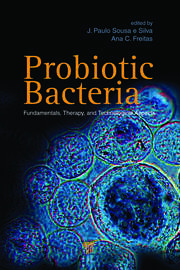ABSTRACT
Each potential probiotic strain isolated from a human, animal, plant, or food source, apart from its accurate identiication, must be validated regarding safety issues according to guidelines deined by a system similar in concept and purpose at both US and European levels, denominated as GRAS (generally recognised as safe) or QPS (Qualiied Presumption of Safety), respectively, permitting in both cases the identiication of what is required to make an adequate safety assessment of a microorganism. In parallel, the probiotic must be submitted to functional characterization, as certain functionalities, namely, its survival through the gastrointestinal tract (GIT) (pH conditions, enzymes, and bile salts), and instead of help predict health beneits potential (production of antimicrobial compounds, activity upon cholesterol, and so on). These potential probiotics must be now tested through increasing complex systems from in vitro studies, to animal and inally human studies requiring, in general, double-blind, randomized, placebo-controlled human trials or other appropriate design with sample size and primary outcomes appropriate to determine if a strain/product is eficient. This eficacy is assured if probiotics colonize transiently the intestine, do not exhibit any adverse effect on the patient, and demonstrated one or more health beneits mediated by one or more mechanisms of actions
to be associated with one or more of the therapeutic applications: (i) the prevention or treatment of infectious diseases, including viral, bacterial, or antibiotic-associated diarrhoea; (ii) relief of chronic bowel inlammatory diseases; (iii) immuno-modulation; (iv) lowering of serum cholesterol; (v) decreased risk of colon cancer; (vi) improvement of lactose digestion; (vii) reduction of allergies; and (viii) effect on intestinal microbiota (Saad et al., 2013). However, some strains are not as stable as required to guarantee the passage throughout the GIT or to resist to the conditions and interactions when incorporated in the food or dosage forms. This reduced stability may be overcome by immobilization or encapsulation of probiotic strain using different encapsulation techniques and materials assuring the required protection for a certain environment and pre-determined period. The safe, functional, and stable probiotic may now be incorporated in a commercial product, either a food or a dosage form. However, launching of these products associated with health claims is regulated according to each country’s legislative system and following strict guidelines. As an example, nutrition and health claims were harmonized at the European level to better protect consumers. EU regulation, EC No. 1924/2006, amended by the European Parliament and the Council of 15 January 2008 (EC No. 109/2008) establishes the necessary authorization procedures to ensure that the allegations contained on packages and in marketing of foodstuffs are clear, precise, and based on evidence accepted by the scientiic community. Despite the developed research performed in the last years, it should be emphasized that the effect of probiotics remains ambiguous and requires more investigations in order to be conirmed or validated. This fact may be not only due to action of these probiotics but also due to the lack of information about the pathogenesis of some diseases (Saad et al., 2013). Although large investigation has been done on health beneits associated with probiotic bacteria as far as binomials strain-therapeutic application and strain-dose effects are concerned, experts still believe that the studies are not yet suficient and information is still lacking. Such expert opinions have barred the possibility of European Food Safety Authority approval over 2012 of related health claims, limiting the use of probiotics with recognized health beneits at food industry level. So, in future, more studies, particularly well-designed, doubleblind, randomized, placebo-controlled trials continue to be required.


